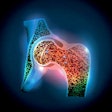
An extensive nationwide trauma network that links more than 850 care providers in Germany is adding teleradiology functionality. Attendees at the recent KIS-RIS-PACS and DICOM meeting held at Schloss Waldthausen near Mainz learned more about the TKmed project.
The TraumaNetwork DGU consists of 55 trauma networks that are electronically linked to provide trauma care for severely injured patients, regardless of their location. While Germany has enough capacity for treating severe trauma based on the number of hospitals in the country, these are not geographically distributed to provide trauma care to all citizens.
 The TKmed project is Germany's first nationwide teleradiology network to incorporate advanced security architecture, according to interventional radiologist and medical physicist Dr. Gerald Weisser.
The TKmed project is Germany's first nationwide teleradiology network to incorporate advanced security architecture, according to interventional radiologist and medical physicist Dr. Gerald Weisser.
TKmed aims to deliver teleradiology coverage for these trauma networks, explained Dr. Gerald Weisser, an interventional radiologist, medical physicist, and head of the teleradiology network of the Rhein-Neckar-Dreieck region of the Instituts für Klinische Radiologie de Universitätsklinik Mannheim. He also acts as a consultant for TKmed and is a member of the telemedicine working group of Deutsche Röntgengesellschaft.
The technical platform of TKmed is built on a central infrastructure of data centers with high availability. Requirements are minimal, and access is by a Web viewer through the Internet. Scaled clients are available. These range from a Web client to a complete gateway at a hospital, with a local database and automatic forwarding option, as well as integration into a hospital's PACS. The maximum data storage is for four weeks. No patient record is created or maintained.
Since 2011, the TKmed project has been operating in a pilot phase in two federal German states. Initial financing was provided by DGU's educational organization, the Akademie der Unfallchirurgie (AUC). Routine use is scheduled to start in the third quarter of 2012 and will be funded from fees of participating hospitals, according to Weisser.
Currently, 15 hospitals have participated in the pilot phase, but the organizers have received applications from more than 50 additional hospitals to join the teleradiology network. Implementation of the first crosslink gateway to the teleradiology network of the Rhein-Neckar-Dreieck region, which integrates approximately 50 hospitals, began in late June.
TKmed uses software from Heidelberg-headquartered PACS vendor CHILI, with the portal and operation from Pegasus. It is Germany's first nationwide teleradiology network to incorporate advanced security architecture, Weisser noted.
A core challenge of the project is security. End-to-end encryption is being implemented, and keys are available only from the central security center. All data on the server are encrypted, including images. Authentication is multiphase, with passwords and tokens based on hardware or mobile phone.
Access is restricted to specific individuals based on need to access. Administrators, for example, are given only technical access. They cannot see patient data. Access by a caregiver organization's department also is not permitted. In fact, the security center is separate from the central infrastructure in order to exclude access to patient data.
"Cross discipline services help enhance care for patients with extremely serious trauma injuries, as well as other accident and emergency patients. When additional disciplines are integrated, patients with strokes or myocardial infarctions may also benefit," Weisser said. "For all of these patients, access to diagnostic images through teleradiology will be very beneficial."
In September 2006, the Deutsche Gesellschaft für Unfallchirurgie, the German Society of Trauma Surgery, published a white paper proposing the establishment of regional trauma networks (TNWs). All hospitals within a TNW would be classified as local, regional, or supraregional trauma centers, and would adopt agreement relating to the treatment, admission, and transfer of critically injured patients.
The idea caught on rapidly. The network was established, and approximately 30 of the trauma networks are certified according to DGU criteria, a rigorous process that takes about three years on average.
Through measures affecting staff qualification, diagnosis, and therapy, close cooperation has led to the intended widespread optimization of processes and quality of care. Electronic transmission of information on the clinical status of patients and lab results plays a major role in routine collaboration. Now communication of diagnostic images is being added.



















